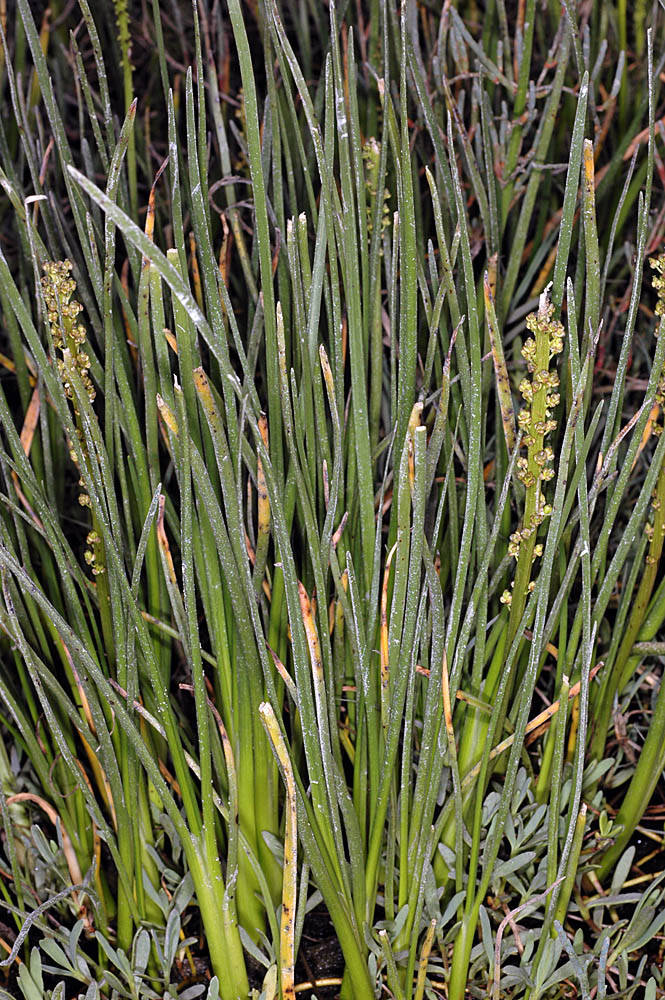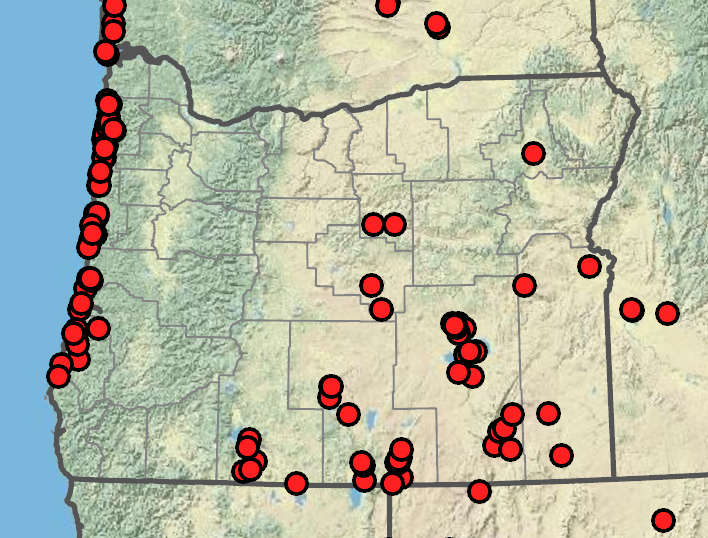Triglochin maritima
Triglochin palustris
seaside arrow-grass
marsh arrowgrass
elliptical in cross section, 22–60 cm × 2–5 mm;
ligules entire to notched, 1–2 mm.
racemes exceeding leaves, 45–130 cm.
ascending, 2–6 mm.
tepals 1.5–2 mm, fertile carpels 6.
schizocarps, oblong, 3–5 mm.
=12, 24, 30, 36, 48, 60, 120, 144.
Triglochin maritima
Triglochin palustris
Coastal salt and inland freshwater marshes and moist meadows, especially brackish, saline, or alkaline areas. Flowering Apr–Aug. 0–1700m. BR, BW, CR, ECas, Est, Owy. CA, ID, NV, WA; throughout North America; South America; Asia, Europe. Native.
Triglochin concinna and T. maritima are frequently considered the same species; the treatment in Flora of North America synonymizes T. concinna with T. maritima (Haynes and Hellquist 2000). Both species produce a cyanide-containing sugar called triglochinin, which can poison livestock when eaten in large amounts. Production is highest in the spring (Majak et al. 1980), and because the compound remains potent in a dried state, care should be taken to prevent inclusion of young Triglochin in hay bales.
[This taxon does not have a floristic treatment in Flora of Oregon.]
Rachel Newton
- Local floras:
BC,
CA,
OR,
WA
- Local Web sites:
CalFlora,
CalPhotos,
Flora NW,
PNW Herbaria
WildflowerSearch
iNaturalist (observations)
USDA Plants Database
- LBJ Wildflower Center
- SEINet
- Plants of the World Online
- Encyclopedia of Life
- Wikipedia
- Google Image Search
- Local floras:
BC,
CA,
OR,
WA
- Local Web sites:
CalFlora,
CalPhotos,
Flora NW,
PNW Herbaria
WildflowerSearch
iNaturalist (observations)
USDA Plants Database
- LBJ Wildflower Center
- SEINet
- Plants of the World Online
- Encyclopedia of Life
- Wikipedia
- Google Image Search




